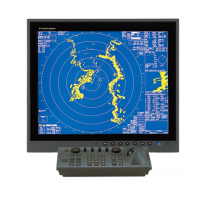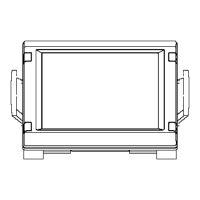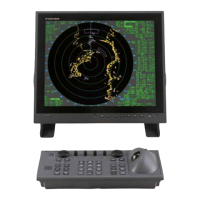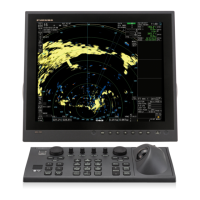Why Furuno FAR-28x7 brilliance adjusted but no picture?
- SStephanie GarciaSep 7, 2025
If you've adjusted the brilliance but there's still no picture on your Furuno Marine Radar, the SPU board may need to be replaced.
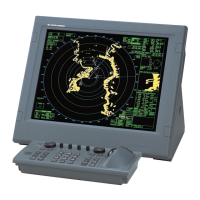
Why Furuno FAR-28x7 brilliance adjusted but no picture?
If you've adjusted the brilliance but there's still no picture on your Furuno Marine Radar, the SPU board may need to be replaced.
Why is my Furuno FAR-28x7 power on but not operating?
The radar might not be operating due to several reasons: * A blown fuse. In this case, replace the blown fuse. * Incorrect mains voltage or polarity. Correct the wiring and input voltage. * A faulty power supply board. Replace the power supply board.
Why is Furuno FAR-28x7 Marine Radar tuning adjusted but poor sensitivity?
If you've adjusted the tuning on your Furuno Marine Radar but are experiencing poor sensitivity, it could be due to: * The 2nd trace echo rejector being on. Turn off the 2nd trace echo rejector. * Dirt on the radiator face. Clean the radiator face.
How to adjust Furuno FAR-28x7 Marine Radar target not tracked correctly?
If a target is not being tracked correctly on your Furuno Marine Radar, adjust the A/C SEA and A/C RAIN controls to improve target definition in sea clutter.
How to adjust Furuno FAR-28x7 ARP target not tracked correctly?
If the ARP target is not being tracked correctly on your Furuno Marine Radar, it may be due to poor definition of targets in sea clutter. Adjust the A/C SEA and A/C RAIN controls.
How to correct Furuno FAR-28x7 true motion presentation not working correctly?
If the true motion presentation is not working correctly, consider the following: 1. Poor contact of the MODE key (full keyboard): Try pressing the MODE key a little harder. 2. Selection not accessed: Press the MODE key or operate the PRESENTATION MODE box until TM appears. 3. Speed entry incorrect: Enter the correct own ship speed. 4. TM display inaccurate: Ensure that speed and compass inputs are accurate.
Why is Furuno Marine Radar picture not updated or picture freeze-up?
If the picture on your Furuno Marine Radar is not updating or is frozen, it may be due to a video freeze-up. Turn the power off and on again to restore normal operation.
How to fix Furuno Marine Radar antenna not rotating?
If the antenna is not rotating, it could be due to: 1. Antenna drive mechanism failure. Replace the antenna drive mechanism. 2. A defective antenna drive motor relay. Press the relay reset button.
What to do if marks, indications and noise appear but no echo (Transmission leak representing own ship position is absent) on Furuno Marine Radar?
If you observe marks, indications, and noise but no echo, and the transmission leak representing your ship's position is absent, check the following: 1. TX fuse: If blown, replace it. If it blows again, the modulator or associated circuit may be defective. 2. Magnetron: Check the magnetron current and replace the magnetron if necessary. 3. Modulator board: Replace the modulator board. 4. SPU board: Replace the SPU board.
What to do if marks, indications and noise appear but no echo on Furuno Marine Radar?
If you see marks, indications, and noise but no echo on your Furuno Marine Radar, check the fuse in the processor unit for any blown fuses.
| Display Type | LCD |
|---|---|
| Power Supply | 24 VDC |
| IMO Compliance | Yes |
| Antenna Length | 6 feet |
| Type | X-band |
| Frequency | 9410 MHz ±30 MHz |
| Rotation Speed | 24 or 48 rpm |
| Antenna Type | Slotted waveguide array |
Details the risks associated with RF radiation from the radar antenna and precautions.
Highlights key features and specifications of the radar series.
Explains the procedure for powering the radar system on and off.
Describes how to turn the radar transmitter on after warm-up.
Details the functions and layout of the radar control units.
Details how to access and navigate the main menu and its sub-menus.
Explains how to operate the radar functions using the on-screen boxes and trackball.
Describes how to use the cursor menu for various radar functions and operations.
Explains how to adjust the display brilliance for optimal viewing conditions.
Covers methods for tuning the radar receiver, including automatic and manual options.
Details the procedure for aligning the radar's heading display with the gyrocompass.
Describes the different radar presentation modes available for viewing.
Covers methods for inputting own ship's speed, essential for ARP and stabilized modes.
Explains how to reduce unwanted echoes from sea clutter using A/C SEA control.
Covers using the Offset EBL to assess collision risk and target courses.
Describes how to set up target alarms to alert for targets entering specific zones.
Covers displaying target trails as synthetic afterglow for motion analysis.
Explains how to assign function keys to provide optimum radar settings for different navigation situations.
Details how to assign radar functions to programmable function keys (F1-F4).
Explains the key factors of radar resolution: bearing and range.
Details the functionality and display characteristics of the SART system.
Provides essential precautions and guidelines for using the ARP function safely and effectively.
Details the controls and operations for the ARP function using both keyboard and trackball.
Details how the radar automatically acquires and tracks targets.
Covers setting CPA and TCPA alarm ranges to detect potential collision risks.
Explains how to set up guard zones for target alarms and automatic acquisition.
Describes the program for assessing the overall performance of the ARP system.
Details the controls and keys used for operating the AIS functions.
Explains how to turn the AIS function on or off.
Explains how to convert sleeping AIS targets to activated targets to view their motion.
Describes how targets are declared lost and how to acknowledge lost target alarms.
Covers the fusion function to combine ARP and AIS data for a single target display.
Covers transmitting and receiving messages via VHF link, including safety and routine messages.
Provides an overview of the video plotter's capabilities, including track plotting and waypoint management.
Explains how to create and use radar maps, combining map lines and symbols with navigation data.
Explains how to remove individual or all marks and lines from the radar map.
Covers correcting positional errors between the radar screen and radar map.
Explains how to overlay FURUNO or NAVIONICS charts on the radar image.
Covers plotting and managing own ship's track data.
Covers storing and managing waypoints, including starting points, destinations, and intermediate points.
Covers the process of saving data, such as tracks and marks, to a memory card.
Explains how to replay video plotter data like tracks and marks from a memory card.
Outlines a regular maintenance program to ensure optimal performance and longevity.
Offers simple troubleshooting procedures for common problems to restore normal operation.
Describes advanced hardware and software troubleshooting procedures for qualified personnel.
Explains how to execute diagnostic tests to check major circuit boards and components.
Provides a visual representation of the radar's menu structure accessed via keys or boxes.
Covers input and output sentences for digital interfaces like GPS and Log.
Provides lists and locations of electrical parts for various units.
